Introduction: To control the quality level of fabrics, it is desirable that the manufacturer’s quality system will include fabric inspection and grading. It is found that the factual record created by fabric inspection is a valuable tool in maintaining healthy communication and good relationships between our precious buyer, fabric suppliers, and garments manufacturers.
Quality characteristics of fabrics cannot always be completely defined regarding product specifications and standards; they must often be supplemented by subjective reference and judgment comparison to approved physical hand samples. To assure the quality of fabrics is equally understood by fabric suppliers and purchasers, we are strongly recommend the use of fabric inspection and physical comparison samples at the mill, sewing factory, and merchandising office.
A grading system is one of the measuring devices or tools of the trade, to be used in establishing realistic standards for fabric acceptance.
Several major point-grading systems are available for evaluation of fabric defects as they related to fabrics quality and quality requirements of specific products.
It’s mentionable that now a day’s factory QC not only ensure defect on fabrics as pointwise, but most of the cases also QC finding running shading or side-center-side shading or both effect within the roll even defect points pass it. So, factory decided to check shading after completion the random general inspection by using fabric shading check report. Factories QC can follow these procedures to assist the manufacturing process:
Materials Receiving Status
Arrival of all types of fabric/Trims as per invoice from the supplier, MCD (Material Control Department) personnel submit receiving Status to QC to make Inspection Plan and log in Fabric/Trims receiving Book. If there are no specific requirements, QC will finish initial inspection within seven working days after the arrival of fabric.
Lab Test – Fabric/Trims
Need to Send Fabric/Trim’s swatches from particular consignment to factories or nominated Lab for various types of tests based on Fabric/Trim’s criteria by using Lab submitting Format.
Shade Separation
Initially, QC segregates shade variation in fabric roll to roll to avoid any chance of mixing shade in the same PO by the following points:
1) At first, merchandiser will provide buyer prescribed color standard (if any), shipping swatches from
fabric supplier against each dye lot.
2) QC cut swatches (6 Inch x 6 Inch) size from the middle of each roll in each consignment for comparing shade variation.
a) Authorized QC persons compare physical swatches with color standard and shipping swatches as well as make group according to shade in light box in dark room under light source D65 and attach all rolls swatches in shade continuity card along with separate card with (3×4)” size swatches from each group like A, B, C with shade continuity report and the Shade summary report. QC distribute shade summary card with the report to a concerned person of Cutting, Sales, MCD and Packing section. Have to send severe shade variation to Central Lab (if required) for spectrophotometer reading. General standard is DE # (0 to 1) for roll to roll and DE # (0 to 0.6) within roll. This report must be identified the Group Shade as per Country/PO/Style wise which is signed by Sales, MCD QC & QC Manager.
b) QC rejects any specific shade if they find any off shade or severe shade and provide sales to inform supplier as well as buyer for confirmation/replacement. To claim to fabric supplier, QC will provide spectra-photometer reading, comparing with color standard/supplier’s shipping swatch (if available) or comparing with Shade – A
c) Sales will make plan for cutting various shade as PO/Country/Carton wise after getting QC prescribed shade with QC advice as well as provide information to QC management by mail/written prior to issuing fabric to cutting section.
 Washing Garments:
Washing Garments: At first cut swatches (6 Inch x 6 Inch) size 3pcs from the middle of each roll in each consignment to make blanket (6×6)=36pcs = 1 blanket in the same color, usually QC make three blankets; 2pcs send to washing plant for washing as per buyer requirement. From that washed blanket, authorized QC persons make group according to shade and attach all rolls’ swatches in shade continuity card along with a separate card with (3×4)” size swatches from each group like A, B, C with shade continuity report and the Shade summary report. Have to send severe shade variation to central lab (if required) for spectra-photometer reading.
Light Box: International light box equipped with
D 65 – North Sky Daylight
TL 84- 4100 K
UV Light (optional)
Light-box must be kept in the dark room with well curtained and ensure no outside light interference can occur.
Fabric/Trims inspection AQL-2.5
By referring to receiving status QC select fabric roll/Trims randomly for Fabric/Trims inspection as per the MIL-STD 105D inspection level 2, AQL-2.5 chart. If any fabric/Trim receiving status less than eight rolls/trims 100 pieces, then full qty of total yards/pieces to be inspected.
Fabric Inspection 4 (four) point System
Factory QC personnel are following
globally accepted 4 (four)-point numerical grading system for Fabric inspection. When defect range in 1 linear yard in any direction within 0-3 inches = 1 point, over 3 inches but less than 6 inches = 2 points, over 6 inches but less than 9 inches = 3 points and over 9 inches = 4 points. Maximum penalty points per 1 yard are 4 points, and 100 linear yards are 25 points. To calculate points for final disposition following formula is being used with the defect code:-
Total Points
Points per 100 Linear Yard = —————————————— x 100
Length of Inspected roll
18
= ——————- x 100 (for example)
78
= 0.23 x 100
= 23.07 Points
Fabric Visual Inspection and Results

Visual inspection of machine is being recorded in an individual fabric roll inspection report, which is very easy to determine the position of defect, and how severe the defect results. MCD QC is analyzing the report and taking decision for appropriate results.
How to Check Color Shading: To check side-center-side shading from every inspected roll, need to cut about 12 Inches full width by folding side to center to side will be sewn.
To check running shading, every inspected roll must be laying over the table by folding every 2/3 yards distance & compare visually & doing lab. Test (within roll/ within Garments, General Standard DE# 0 to 0.6). For color shading checking QC evaluate roll wise grading like A (for use), B (for use on condition), C (not for use) & C grade treated as fail with red tag.
Inspection Frame/Speed: 90 degrees frame should be equipped with a variable speed drive, a Yard Counter, and undercarriage light to see through the construction and overhead Light to inspect face side. The frame should be capable of running between 15 to 25 yards per minute.
Light Standard: 1000 Lux
General Criteria for Acceptable Quality: Beside the point system following criteria also applies for rejecting whole shipment or a part of shipment.
*Off shade- If color is not a commercial match.
*Shading- Visible side to side or side-center-side or end to end color variation.
*Variation in cut-able width.
*Shortages of length- According to packing list roll wise length shortage.
*Aesthetics- Hand feels too stiff or soft comparing to standard
*Loose or wavy fabric.
*Uneven to streaky dyeing
*Continuous defects- All defects which are ongoing and are caused due to construction or finishing will be cut out & need to claim for replacement or expect credit for such unusable quantity through sales department.
*If part of the fabric/trims inspected has excessive defects and cannot be used to make first quality garment need to seek a replacement from the vendor through sales department.
*Lab result- Failure in Lab test result.
Results Status
Pass: If there are no buyer specific requirements, 0-25 Points per 100 Linear Yards is being considered as pass to cutting section with approval from MCD-QC concern.
Yellow Tag: Over 25 points per 100 Linear Yards but can be possible to use with short replacement; any individual roll should be yellow tagged with specific comments on defects. Individual fabric roll inspection sheet also should be attached with Tag to see the
pattern of defects for identification. It should be held until the decision from the authorized person of QC, Sales to use. Yellow tagged rolls can’t be kept in MCD area by mixing with passed or non-inspected fabric lots. QC provides the swatch to Sales & QC keeping.
Red Tag: Any roll of the consignment can be non-usable by the visual evaluation or Lab-reading is being treated as fail with a red tag. All red tagged rolls should be kept in MCD in isolated area with clear identification mark and maintaining Log Book.
To use red tag, it must be approved along with sufficient supporting documents (Buyer/Supplier confirmation/Related e-mail communication/Factory management approval) to be recorded in a log book for future reference
Fabric inspection Summary
All individual Fabric roll inspection results to be summarized in Fabric inspection Summary report.
Final disposition of Consignment and dispatch reports
QC gives results of full consignment in Fabric inspection summary report. Decision for making Yes/No on the shipment is being taken with the help of AQL Chart (2.5). In case of fail shipment, QC continues inspection up to 60% of the particular consignment. To continue 100% inspection, QC is claiming to supplier through Sales for charge of inspection cost in a specific format – Claim sheet. For 100% inspection claim charge is 3.25 US dollar per hour inspection cost. After completion of inspection summary report, QC dispatches that to concerned persons of sales, cutting & MCD section.
Trims Inspection & results
Visual inspection is being recorded in a trims inspection report.

Results Status
After completion of random inspection based on Mill-Std 105D, AQL-2.5 only Passed Lots can be preceded by production and if the findings are not acceptable, total consignment to be held and continue inspection for another 20% for clarification. Items became failure in inspection should be kept in isolated area with red tag based on severity. To use red tagged trims, it must be approved along with sufficient supporting documents to be recorded in a log book for future reference.
Vendor Performance Report (VPR): To develop and assess vendor’s performance QC makes VPR monthly, yearly for management’s review.
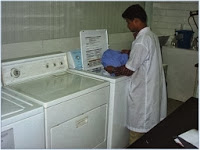 Washing Garments: At first cut swatches (6 Inch x 6 Inch) size 3pcs from the middle of each roll in each consignment to make blanket (6×6)=36pcs = 1 blanket in the same color, usually QC make three blankets; 2pcs send to washing plant for washing as per buyer requirement. From that washed blanket, authorized QC persons make group according to shade and attach all rolls’ swatches in shade continuity card along with a separate card with (3×4)” size swatches from each group like A, B, C with shade continuity report and the Shade summary report. Have to send severe shade variation to central lab (if required) for spectra-photometer reading.
Washing Garments: At first cut swatches (6 Inch x 6 Inch) size 3pcs from the middle of each roll in each consignment to make blanket (6×6)=36pcs = 1 blanket in the same color, usually QC make three blankets; 2pcs send to washing plant for washing as per buyer requirement. From that washed blanket, authorized QC persons make group according to shade and attach all rolls’ swatches in shade continuity card along with a separate card with (3×4)” size swatches from each group like A, B, C with shade continuity report and the Shade summary report. Have to send severe shade variation to central lab (if required) for spectra-photometer reading.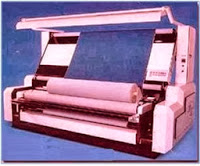 Visual inspection of machine is being recorded in an individual fabric roll inspection report, which is very easy to determine the position of defect, and how severe the defect results. MCD QC is analyzing the report and taking decision for appropriate results.
Visual inspection of machine is being recorded in an individual fabric roll inspection report, which is very easy to determine the position of defect, and how severe the defect results. MCD QC is analyzing the report and taking decision for appropriate results.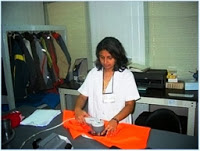
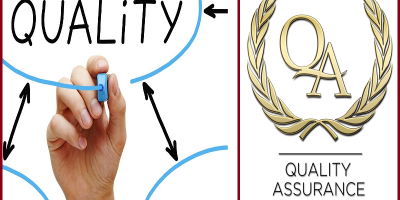
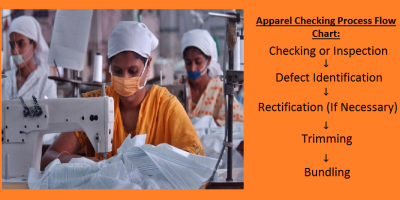
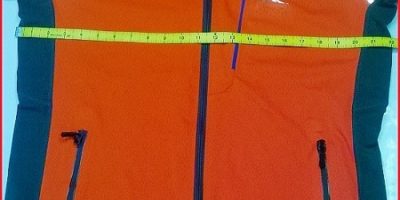
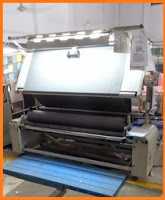
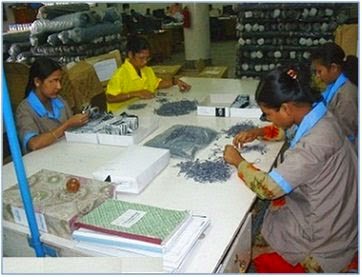

Leave a Reply
You must be logged in to post a comment.